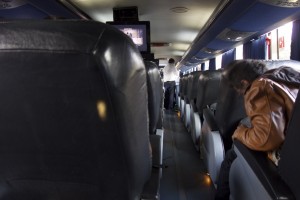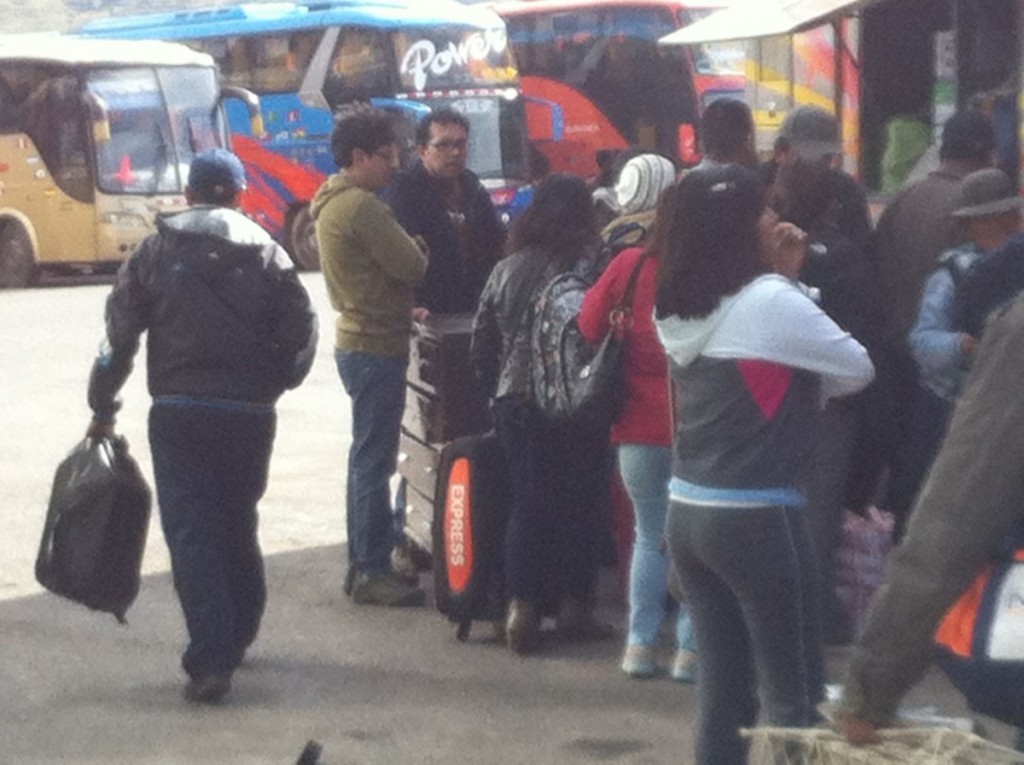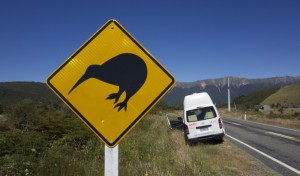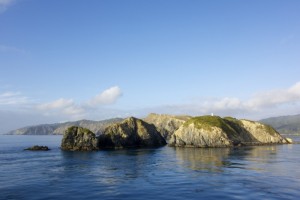The way to travel around South America are busses! You can fly, but it’s usually only affordable within one country, if at all. Interestingly bus fares and bus standards vary widely between countries even if you only take into account tourist busses.
Archiv der Kategorie: Trains and Busses
Traveling by busses and ferries in NewZealand
Whenever you come to NewZealand the best way to travel around is a car. If you stay a couple of months even buy one. There is so much to see, local busses only exist in the big cities and national busses only stop at the big hubs.
Renting cars is pretty expensive but many people do anyway. If you travel south to north check out relocation cars (Most travel north to south and car companies need to get there cars back to the north island.), you can get some pretty good deals for them.
Anyway going by bus is straight forward. You can buy bus passes which make multiple journeys much cheaper, busses leave at time and you can book everything using your smartphone (so comfortable).
If you want to go somewhere more remote and don’t have a car the hitch hiking culture of NewZealand provides a really nice alternative. It’s pretty safe, cheap and you get to know a lot of nice people. My first time I didn’t even wanted a ride when the nice couple stopped next to me and offered me a lift to Ohakune.
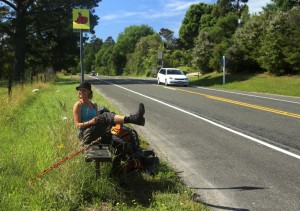
Hitch hiking is so much of a culutre in NZ that the even provide benches and thumb up signs to make your journey more comfortable. My own pimping worked pretty well too.
The ferry ride from between the islands is probably one of the most beautiful ferry rides you can get. Though quite expensive you have a great view of Wellington, the bay around it and you cruise around an hour through the sounds of Picton. It gorgeous in good weather. And if you are really lucky (we were) you meet dozens if dolphins swimming and jumping around the ferry.
Traveling Chinese busses and trains
Getting into the Chinese public transport is a completely new chapter in the book. You can actually find long distance busses that are modern, clean and seats can put almost into a horizontal position (Less modern version unfortunately also exists). The only weird thing while traveling by bus is that they stop for no apprehend reason for 3-4h in the middle of the journey and that the air condition is set to 17dg making the journey a little uncomfortable.
Driving mongolian busses and trains
I already gave some impressions of driving in mongolian Minivans for our Gobi Tour. Driving the local busses is somewhat similar. It’s shaky (roads are the same as for the minivans), they don’t have seat belts (despite bad road conditions), are over crowded (no limits on luggage and kids that can be carried on one ticket) and they are however lovingly decorated by their owner. In contrast the driver shows some reasonably pace, resulting in 10h travel time for about 400 km.
A ride through the desert in a bread

Lunch was an event in it self. Typical mongolian food being prepared in the tiniest kitchens, sometimes not more than to pots on a stove.

Learning about buddhistic roots. Piles of stones decorated with blue bands have to be circled clockwise three times while throwing additional stones on the pile to worship soil.

How do Mongolians get their goats lining up that disciplined before getting tied together and milked stayed a riddle for us.

The inside of the temple is richly decorated in the colour of sun – orange and sky – blue.
3. Day: Getting up at 5:30 and being rewarded with a colorful sunrise bathing the valley in warm atmosphere. Being hit by the full power of the desert heat, nearly knocking me out by lunch. 1.5L of water prevented the worst so I could enjoy me first ride in something else than a bicycle, a camel. I can state it is as shaky as the bus rides in Mongolia. We were abandoned by the big sand dune overruling all plans. Our camel guide indicated us to go up (we didn’t brought water nor cameras). We anyway made it to the top and were saved by a Danish couple handing us a bottle of water.

From left to right. Camel 1, camel 2, camel 3, camel 4, camel 5, camel 6. Camels don’t get names, because they are kept half wild. (Guide, Tom, Santos, Noemié, Steffi, Jen).

